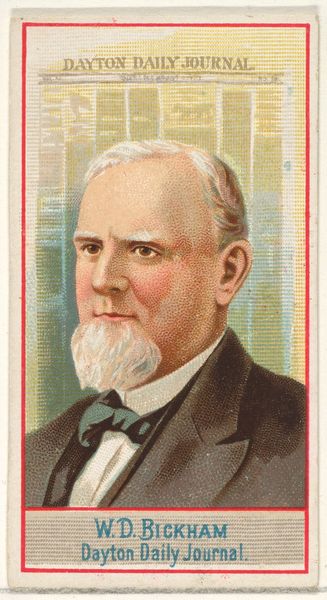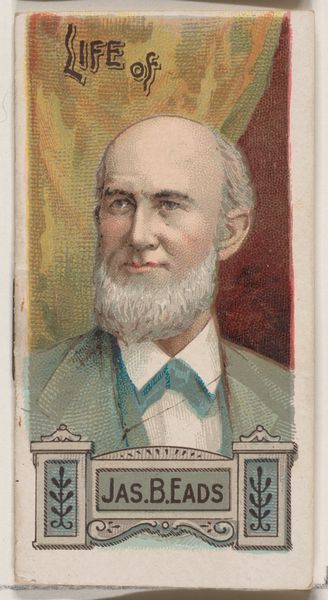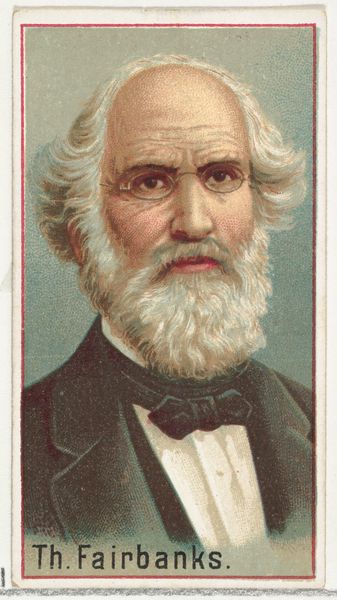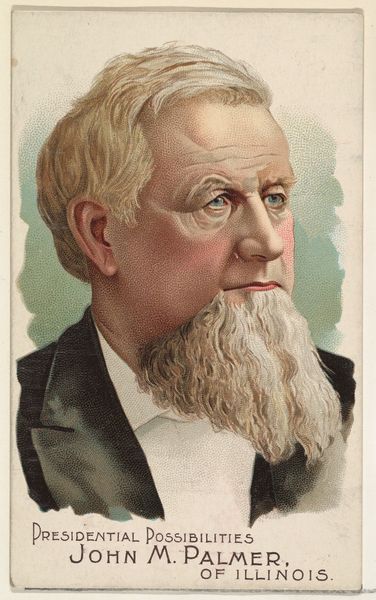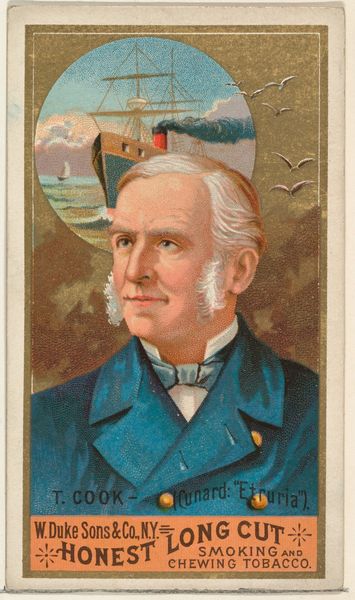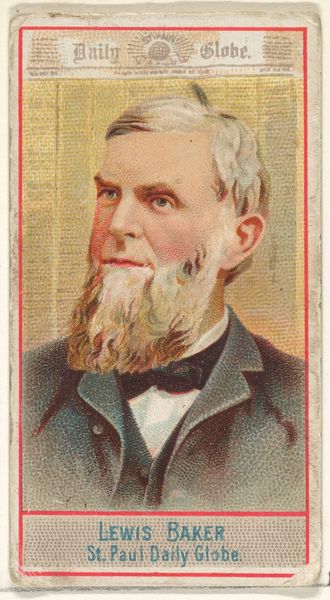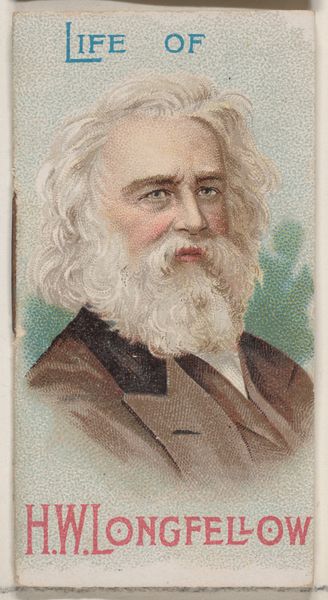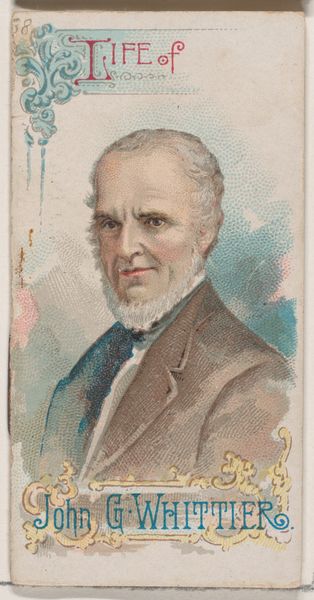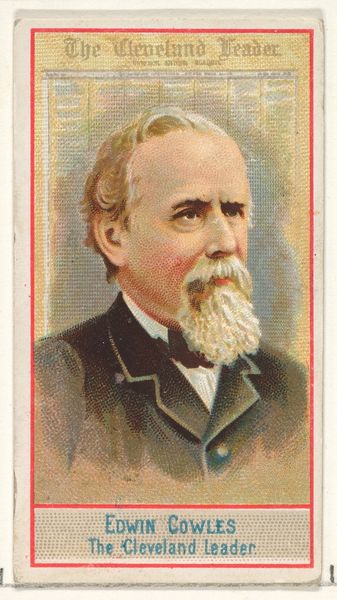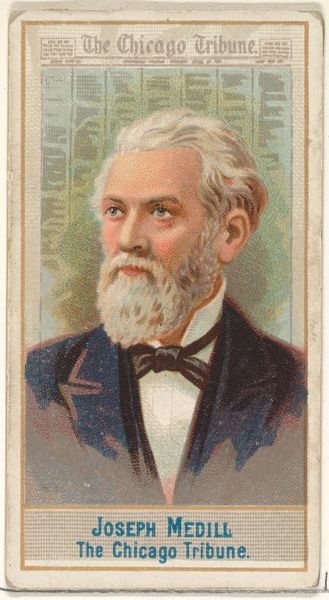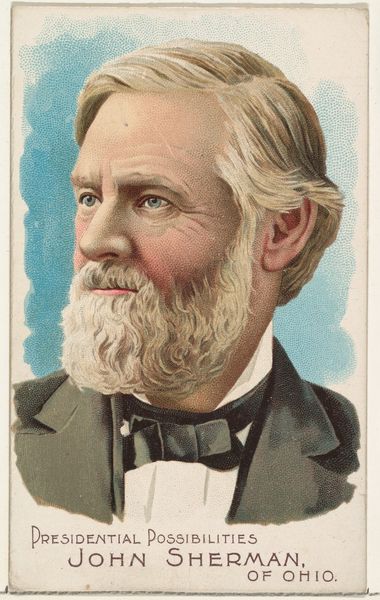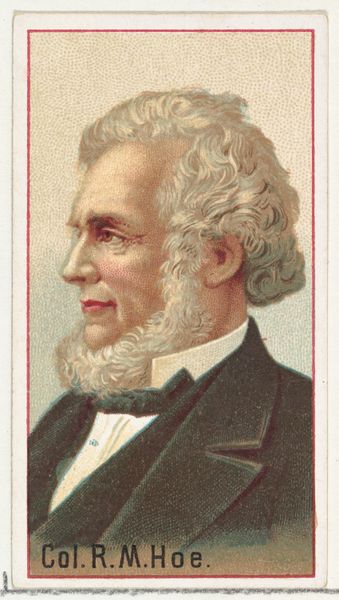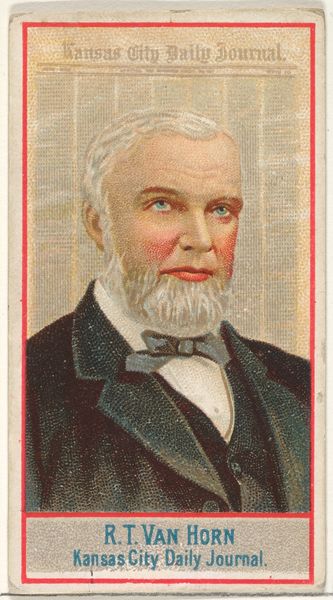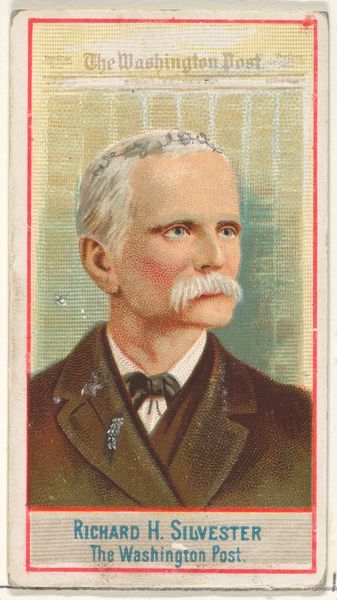
John Greenleaf Whittier, from the series Great Americans (N76) for Duke brand cigarettes 1888
0:00
0:00
drawing, lithograph, print
#
portrait
#
drawing
#
lithograph
# print
#
impressionism
#
caricature
#
men
#
portrait drawing
#
portrait art
Dimensions: Sheet: 2 3/4 × 1 1/2 in. (7 × 3.8 cm)
Copyright: Public Domain
Curator: This lithograph is a portrait of John Greenleaf Whittier, an American Quaker poet and advocate for the abolition of slavery, as part of the “Great Americans” series, created around 1888, for Duke brand cigarettes. Editor: Right. I’m immediately struck by the somewhat ghostly quality. It's a wintery scene, rendered in a slightly faded, impressionistic style—making him look almost like a benevolent spirit watching over a snow-covered New England landscape. Curator: Yes, the "Great Americans" series used lithography to produce images intended to be collected and traded. They were inserted into cigarette packs as a premium. The goal was to associate the Duke brand with celebrated figures, and encourage consumer loyalty through collection. Note the boast beneath the subject’s name that proclaims: "W. Duke, Sons & Co., the Largest Cigarette Man. in the World.” Editor: Fascinating! I love the odd pairing. This contemplative poet shilling cigarettes... There’s something inherently strange about the commercial exploitation of high-mindedness! And how these lithographs served as these tiny windows into fame, folding neatly into your pack of smokes... I almost want to cough ironically in deference! Curator: The context of production complicates how we view these portraits today. It blurs the lines between high art and commercial ephemera, between celebrating an individual and using their image to sell a product. The use of a relatively accessible printmaking method like lithography allowed for mass production and distribution, reaching a wider audience than traditional painted portraits would have. Editor: That's right. We often forget how much art and even fame was once entwined with these fleeting everyday objects! It humanizes things in an interesting way, too, right? Here is old Whittier caught in this strange temporal loop as advertisement. What to make of that collision? It does cast him, slightly ironically, as "the cigarette man in the world"... which, of course, is completely absurd! Curator: Ultimately, what resonates is the visual shorthand employed to establish the American ideal. This artwork reveals as much about consumption and manufacture as it does the representation of greatness in 19th-century America. Editor: Definitely. It is more than just an image—a quirky little portal offering insight into the layers of American history and advertising and fame, reminding us that greatness, or at least its image, has always been for sale.
Comments
No comments
Be the first to comment and join the conversation on the ultimate creative platform.
